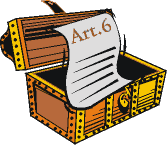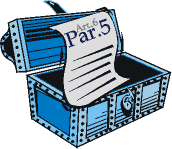Domestic support in agriculture
Domestic support in agriculture: The boxes
![]() In WTO terminology, subsidies in general are identified by “boxes” which are given the colours of traffic lights: green (permitted), amber (slow down — i.e. need to be reduced), red (forbidden). In agriculture, things are, as usual, more complicated. The Agriculture Agreement has no red box, although domestic support exceeding the reduction commitment levels in the amber box is prohibited; and there is a blue box for subsidies that are tied to programmes that limit production. There are also exemptions for developing countries (sometimes called an “S&D box” or "development box", including provisions in Article 6.2 of the Agreement).
In WTO terminology, subsidies in general are identified by “boxes” which are given the colours of traffic lights: green (permitted), amber (slow down — i.e. need to be reduced), red (forbidden). In agriculture, things are, as usual, more complicated. The Agriculture Agreement has no red box, although domestic support exceeding the reduction commitment levels in the amber box is prohibited; and there is a blue box for subsidies that are tied to programmes that limit production. There are also exemptions for developing countries (sometimes called an “S&D box” or "development box", including provisions in Article 6.2 of the Agreement).
Amber box


Nearly all domestic support measures considered to distort production and trade (with some exceptions) fall into the amber box, which is defined in Article 6 of the Agriculture Agreement as all domestic supports except those in the blue and green boxes. These include measures to support prices, or subsidies directly related to production quantities.
These supports are subject to limits. “De minimis” minimal supports for both product-specific and non-product-specific support are allowed, defined as a share of the value of agricultural production. This threshold is generally 5% of the value of agricultural production for developed countries, 10% for most developing countries — although some WTO members agreed to a different level when they negotiated to join the WTO. Furthermore, 32 WTO members with larger subsidies than the de minimis levels at the beginning of the post-Uruguay Round reform period committed to reducing these support levels.
Amber Box: who can use it?Thirty-two WTO members have commitments to reduce their trade-distorting domestic supports in the Amber Box (i.e. to reduce the “total aggregate measurement of support” or AMS).
|
The reduction commitments are expressed in terms of a “Total Aggregate Measurement of Support” (Total AMS) which includes all supports for specified products together with supports that are not for specific products, in one single figure. In the Agriculture Agreement, AMS is defined in Article 1 and Annexes 3 and 4.
Blue box


This is the “amber box with conditions” — conditions designed to reduce distortion. Any support that would normally be in the amber box, is placed in the blue box if the support also requires farmers to limit production (details set out in Paragraph 5 of Article 6 of the Agriculture Agreement).
At present there are no limits on spending on blue box subsidies.
Green box


The green box is defined in Annex 2 of the Agriculture Agreement.
In order to qualify, green box subsidies must not distort trade, or at most cause minimal distortion (paragraph 1). They have to be government-funded (not by charging consumers higher prices) and must not involve price support.
They tend to be programmes that are not targeted at particular products, and include direct income supports for farmers that are not related to (are “decoupled” from) current production levels or prices. They also include environmental protection and regional development programmes. “Green box” subsidies are therefore allowed without limits, provided they comply with the policy-specific criteria set out in Annex 2.
Development Box
Article 6.2 of the Agriculture Agreement allows developing countries additional flexibilities in providing domestic support. The type of support that fits into the developmental category are measures of assistance, whether direct or indirect, designed to encourage agricultural and rural development and that are an integral part of the development programmes of developing countries. They include investment subsidies which are generally available to agriculture in developing country members, agricultural input subsidies generally available to low-income or resource-poor producers in developing country members, and domestic support to producers in developing country members to encourage diversification from growing illicit narcotic crops.